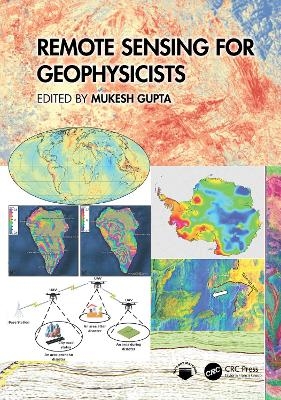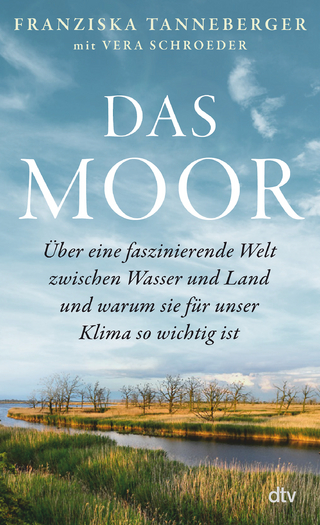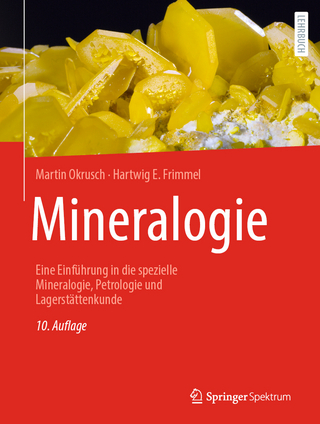
Remote Sensing for Geophysicists
CRC Press (Verlag)
978-1-032-77892-1 (ISBN)
- Noch nicht erschienen (ca. März 2025)
- Versandkostenfrei innerhalb Deutschlands
- Auch auf Rechnung
- Verfügbarkeit in der Filiale vor Ort prüfen
- Artikel merken
Geophysical exploration methods are very expensive and invasive methods for surveys. Remote sensing methods are much cheaper and non-invasive for investigating the Earth’s surface. This book bridges this gap and aims to integrate exploration geophysics with remote sensing as a cost-effective method and easy to implement for prospecting in different areas. It provides exploration geophysicists with the necessary information to use advanced remote sensing technology in the exploration of oil and gas, minerals, and groundwater. It describes the integration of remote sensing in each of the nine exploration methods based on over 11 case studies from different countries across the globe.
Features
Describes the geophysical exploration methods that geophysicists frequently use, along with suitable remote sensing techniques.
Offers a well-structured one-stop guide for finding a suitable remote sensing technique for a specific geophysical exploration method.
Provides case studies on the exploration of oil, gas, and groundwater with step-by-step instructions using remote sensing technology.
Serves as a practical field book for exploration geophysicists who never used or rarely use remote sensing.
Enables exploration geophysicists to understand and interpret remote sensing data for the assessment of complex explorations.
This book is an excellent resource for professionals, researchers, academics, and students with a background in remote sensing across many disciplines in Earth sciences such as geology, hydrology, petrology, mining, geography, geosciences, etc.
Dr. Mukesh Gupta is a geophysicist and a professional researcher in coastal engineering at the Université du Québec à Rimouski (UQAR), Canada. He held a post-doctoral fellowship at the UCLouvain, Belgium in Arctic climate modeling, and conducted his research in developing satellite data products at the ICM-CSIC, Spain. He has been the NSERC Visiting Fellow at the Environment and Climate Change Canada, and a Scientist/Engineer at the SAC-ISRO, India with expertise in Earth observation. He earned his M.Tech. at the IIT Roorkee, India, and his Ph.D. at the University of Manitoba, Canada, specializing in applied geophysics and Arctic sea ice, respectively. Dr. Gupta is a Review Editor of over 30 journals and has peer-reviewed over 140 journal papers. He has published several peer-reviewed journal papers, scientific reports, and book chapters.
Section 1: Remote Sensing in Gravity Methods. 1. Satellite Gravimetry for Geophysical Purposes. 2. Assimilating GRACE Data into a Hydrological Model. 3. Satellite-Based Geodesy. 4. A Brief History of GIA Research and Recent Advances via Remote Sensing. Section 2: Remote Sensing in Magnetic Methods. 5. Understanding Geomagnetic Environment from Satellite and Ground-Based Magnetometers. 6. Mineral Exploration Using Remote Sensing. 7. Monitoring Earth's Ionosphere using Remote Sensing Techniques. Section 3: Remote Sensing in Seismic Methods. 8. Using Remote Sensing for Seismic Interpretation: A Case Study from Coastal Tanzanian Basin. 9. Remote Sensing for Studying Pre-Earthquake Phenomena. 10. Remote Sensing for Neotectonic Investigations: A Case Study from Southern Egypt. Section 4: Remote Sensing in Electrical Methods. 11. Integrated Approaches to Groundwater Exploration: A Case Study of Maze Catchment, Ethiopia. 12. Mineral Mapping Using Geoelectrics and Remote Sensing. 13. Satellite-Based Investigations of Ionospheric Electric Fields. Section 5: Remote Sensing in Electromagnetic Methods. 14. Remote Sensing Assessment of Accumulation Area Ratio in Glacier Monitoring. 15. Remotely Piloted Aircraft Systems (RPAS) in Geophysics. 16. Electromagnetic Methods in Biogeophysics. 17. Remote Sensing Methods in Agrogeophysical Investigations. 18. Remote Sensing in Coastal Studies. Section 6: Remote Sensing in Radioactivity Methods. 19. Mineral Identification using Remote Sensing. 20. Remote Sensing Detection of Marine Radioactivity. Section 7: Remote Sensing in Geophysical Well-Logging. 21. Remote Sensing for Hydrocarbon Exploration. 22. Role of Remote Sensing in Groundwater Well-Logging. Section 8: Remote Sensing in Geothermics. 23. Remote Sensing in Geothermal Studies of Cold Regions. 24. Heat Flow Terrestrial Mapping in Antarctica. 25. Geothermal Studies of Volcanoes Using Satellites. 26. Using Remote Sensing for Geothermal Exploration. Section 9: Remote Sensing in Integrated Geophysical Problems. 27. Leveraging Remote Sensing Technologies for Seismic Hazards Assessments. 28. Remote Sensing in Archeology. 29. Volcano Monitoring: Using SAR Interferometry for the Pre-Unrest of La Palma and the Post-Unrest of Santorini. 30. Mineral Exploration: Integrating Remote Sensing, GIS, AI, and Seismic Methods. 31. Soil Textures and Urban Heat: Cooling Planning Strategies. 32. Remote Sensing Technologies for Earthquake Management.
| Erscheint lt. Verlag | 12.3.2025 |
|---|---|
| Zusatzinfo | 43 Tables, black and white; 68 Line drawings, color; 45 Line drawings, black and white; 39 Halftones, color; 7 Halftones, black and white; 107 Illustrations, color; 52 Illustrations, black and white |
| Verlagsort | London |
| Sprache | englisch |
| Maße | 178 x 254 mm |
| Themenwelt | Naturwissenschaften ► Geowissenschaften ► Geografie / Kartografie |
| Naturwissenschaften ► Geowissenschaften ► Geologie | |
| Naturwissenschaften ► Geowissenschaften ► Geophysik | |
| ISBN-10 | 1-032-77892-X / 103277892X |
| ISBN-13 | 978-1-032-77892-1 / 9781032778921 |
| Zustand | Neuware |
| Informationen gemäß Produktsicherheitsverordnung (GPSR) | |
| Haben Sie eine Frage zum Produkt? |
aus dem Bereich


